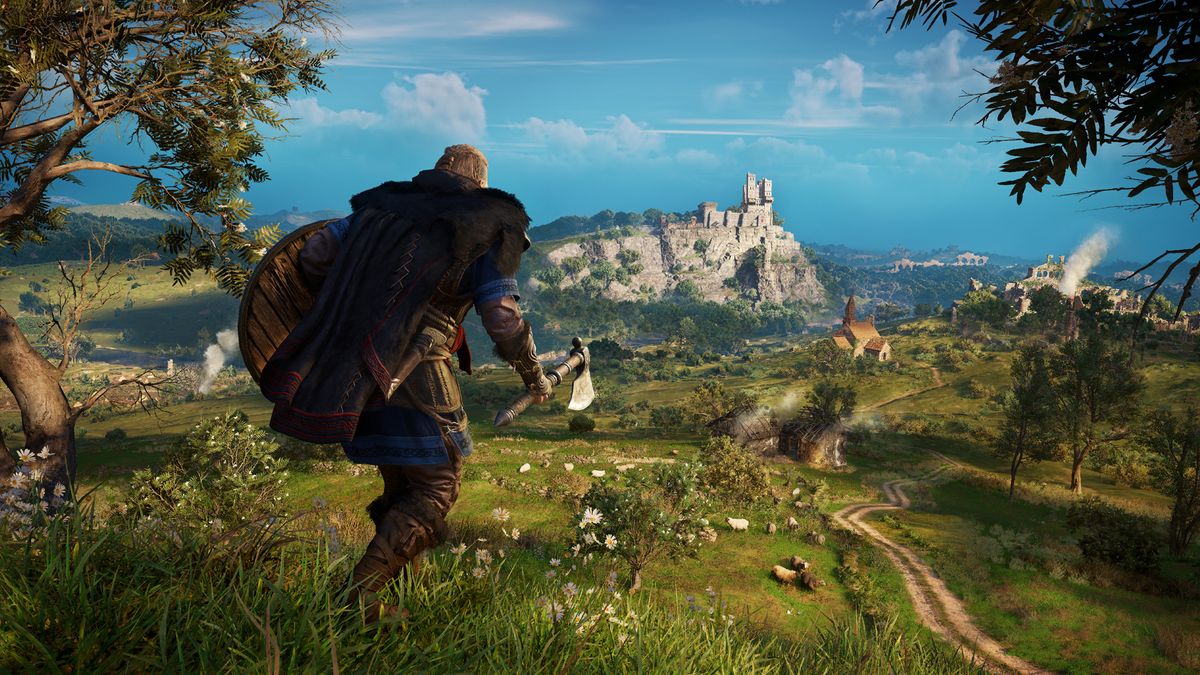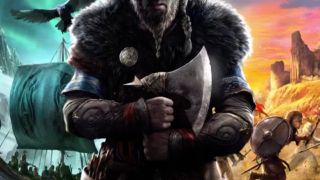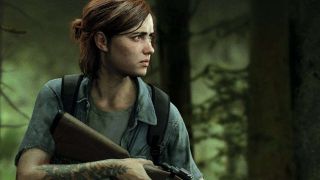How audio description within games could make them more accessible for blind and low vision players
"You have to build the game with audio description in mind"

Shortly before the release of The Last of Us 2, Naughty Dog posted an extensive list of accessibility features that would be included in the game, with over 60 options available to fine-tune and alter the settings to cater to the needs of as many players as possible. You just have to watch reaction videos and read the many wonderful words posted online in the aftermath of the game's release to understand just how much these options meant to players around the world.
Furthering accessibility and inclusivity is a goal the industry should always be working towards, and while there have been great strides made in recent years, there is still a lot of work to be done. Accessible-gaming advocate and consultant Brandon Cole points to The Last of Us 2 as a shining example of blind accessibility, but expresses the need for there to be more choice and more games that consider the needs of blind or low vision players.
"The work being done to make games more accessible right now is fantastic, but it's also not enough. We accessibility advocates and consultants need to keep pushing, because we are still not yet where we could be," Cole says. "Blind accessibility has only just begun. While The Last of Us 2 is a shining example, it is a megalodon in a small pond. The blind want more choices, more games, more opportunities to share in the experiences of their sighted and even partially-sighted friends."
Included in the conversation
Earlier in the year, Cole worked with Ubisoft Montreal as a consultant for the studio's blind initiatives. It's an initiative designed to help guide Ubisoft's efforts to make its games more accessible to all players, with a particular focus on ways its development teams can bring blind and low vision players into its games and the conversation that surrounds them.
One of the most immediate results of Cole's workshop with Ubisoft Montreal was the release of an audio-described trailer for Assassin's Creed Valhalla. For those of you that don't know what an audio-described trailer is, think of it as a form of audible narrative that plays within a trailer that describes the action as it unfolds in detail to provide a more immersive picture. It's this type of consideration that can include more people in the conversation – which is, in itself, an important part of sharing in the experience of a game. By releasing audio-described trailers, studios like Ubisoft are working to ensure that blind and low-vision players can experience trailers in a more immersive and inclusive way.
Ubisoft is continuously working to make accessibility "part of its DNA" moving forward. David Tisserand, senior manager of accessibility at Ubisoft, tells me that the audio-described trailers are part of the studios overall strategy to "make sure that we really make the end-to-end user experience accessible to everyone."
"When you say end-to-end user experiences, it's from the first time people can hear about our games to the last time; maybe they can talk on our forums, or contact our customer support, and everything in between in this experience," Tisserand explains. "So trailers are just one part of that. It's one way to inform players about what we're working on and to get them excited about it. And we just wanted to make sure that we could include as many people as possible in the discussion. And like we are trying to do this with our games, we're also trying to do this with our PR marketing and events teams – like the team responsible for Ubisoft Forward – and trying to make sure everything is as accessible as possible."
Sign up to the 12DOVE Newsletter
Weekly digests, tales from the communities you love, and more

"We want to help you. But don’t tell us games are for everyone and then exclude us."
Brandon Cole, accessibility consultant
Descriptive Video Works had been looking for ways to bring its expertise in audio-description to make video games more accessible and it finally got its chance last year, when Ubisoft approached the team for assistance. So far, Descriptive Video Works has collaborated with Ubisoft on the audio-described trailers for Assassin's Creed Valhalla, Ghost Recon Breakpoint, and Far Cry 6. "This particular set of opportunities with doing audio description for trailers came from Ubisoft," says Rhys Lloyd, general manager at Descriptive Video Works. "They reached out to us and they said, 'Look, we are really interested in adding this to our service offering, we know your work in your specialty area and we want to partner with you on it.' And we were so excited, because it's like we're pushing at various doors and then all of a sudden one pushed open to us which was fantastic."
Despite having worked on TV shows, movies, and live-streaming events in the past, working on video game material was a new challenge for Descriptive Video Works. The team knew it couldn't just present a descriptive and immersive picture of the trailer's events as they unfolded, it also needed to ensure that blind and low vision players came away from the Valhalla reveal with a clear appreciation for the visual easter eggs and narrative clues that were hidden throughout. That required a close collaboration between the two companies.
"The teams that we've worked with on various gaming trailers have been terrific in partnering with us," Lloyd continues, explaining that constant communication was key. "'This is what we did, based on our experience, but do you need us to adjust these areas? Is this too much description? Are we stepping on the music too much?' Are there specific things within this trailer that you guys know and want us to call up – like the easter eggs or the hidden blade that acts as a sort of callback to previous Assassin's Creed games. This one was on the outside [of his gauntlet], and so a sighted viewer would know that, but a visually impaired viewer might not."
Going beyond game trailers

Audio-descriptive trailers are only the beginning. When it comes to making more games more accessible to blind and low vision players, there's a long road ahead for much of the games industry – particularly in the AAA space. Lloyd believes that there is scope for audio-description to be better implemented into games themselves, such as to assist players navigating in-game menus. Lloyd believes this is just one area that companies like Descriptive Video Works can make a big impact. "If you're, for instance, selecting a character to play – there's text to speech elements that can tell you some things – but an audio description could give you a really deeper evocative picture of who that character is within a sort of menu selection screen."
Another key part of the process of creating audio description within a game is working and consulting with blind and visually impaired players. Descriptive Video Works consulted with blind and low-vision players to gain a better understanding of how much description they wanted in a game. Rhys Lloyd says it was an invaluable experience, and the level to which the team was able to partner with the audience it was trying to reach was something the company had never experienced before.
"We've been speaking to various visually-impaired gamers and said, 'when we get to this point [of bringing audio description to games], what do you want?' And one of them said something that really resounded with me, which is, 'I want you to give me as much description as you can and I'll decide how much I want to hear'. So [for example], 'I've entered into this new level or this new room, describe it fully to me. I'll tell you when I'm bored and want to move on.' And that's something we've never experienced before; that level of ability to partner with the audience and thus get them involved in the feedback to us."
Just as Ubisoft worked with consultants for its blind initiatives and Naughty Dog brought in consultants during development, Cole believes more developers need to invest in accessibility and bring consultants into their studios to work with them on making games more accessible. "Developers need to commit," Cole says. "If you want accessibility, get consultants like myself for blindness, Steve Saylor for low vision, and Paul Lane for motor impairment, (as well as many others), into your studios, and work with us. We will help you. We want to help you. But don’t tell us games are for everyone and then exclude us."
The end goal

Naughty Dog's work with consultants during development and Ubisoft's dedicated accessibility team are examples of just what can be achieved when developers invest in accessibility. When it comes to audio description in games, though, how could it be implemented at a deeper level to create more accessible and immersive experiences? Part of the problem, Lloyd believes, is that consideration for blind and low vision players can come too late in development. That's something that will need to be considered if real change is to be enacted. "We recognized there were certain impediments. For us, it was a deeper understanding of how games are built; for the gaming world, it was a deeper understanding of how this could work within their games."
"The reality is that at a deeper core level, you have to build the game with audio description in mind. Traditionally, the way audio description services work is, we're a service used at the very end of the production pipeline. With TV shows and movies, we get it a couple of days before it airs, we do our thing, and then it goes on TV or a streaming service or whatever it is," Lloyd considers, adding, "If you're going to get audio-description in at that really core granular level of like, object-based description within the game, I think it really has to start early on and that's been confirmed by some of the conversations we've had."
Creating audio description at a deeper level within games presents its own unique challenges, given how dynamic and interactive games are – but it's a worthy goal to try and achieve. Ultimately, no challenge is too great if it means that more people get to play and become part of the wider conversation around games. "The end goal is to be truly immersive," Lloyd continues. "To give visually impaired players the same experience as a sighted player, in terms of the dynamics of the game and how they interact with the world that's been created by the developers."

I started out writing for the games section of a student-run website as an undergrad, and continued to write about games in my free time during retail and temp jobs for a number of years. Eventually, I earned an MA in magazine journalism at Cardiff University, and soon after got my first official role in the industry as a content editor for Stuff magazine. After writing about all things tech and games-related, I then did a brief stint as a freelancer before I landed my role as a staff writer here at 12DOVE. Now I get to write features, previews, and reviews, and when I'm not doing that, you can usually find me lost in any one of the Dragon Age or Mass Effect games, tucking into another delightful indie, or drinking far too much tea for my own good.
Most Popular


